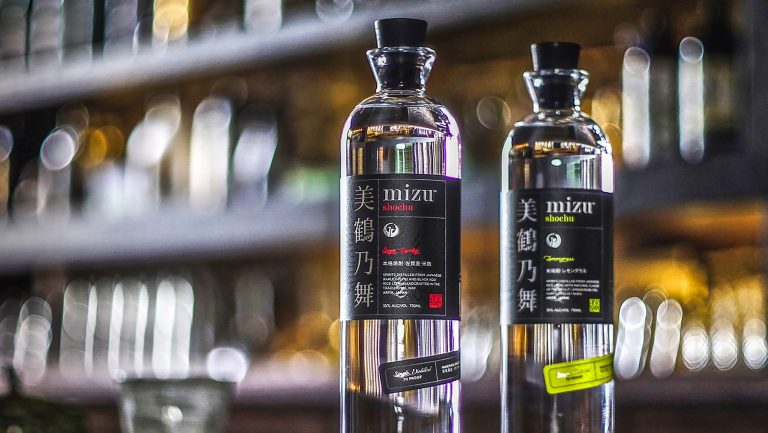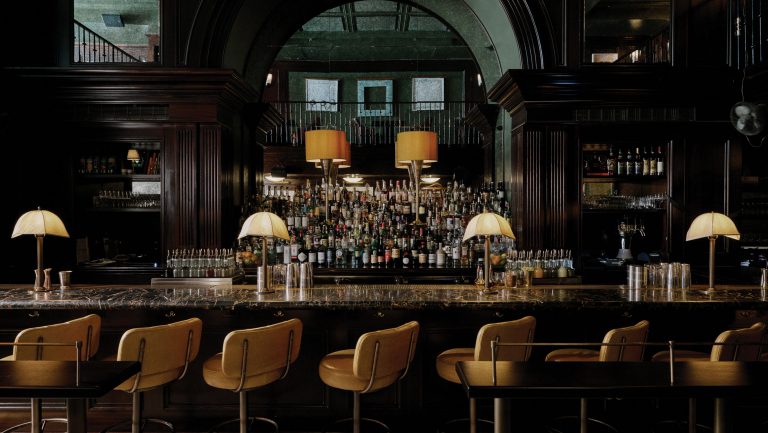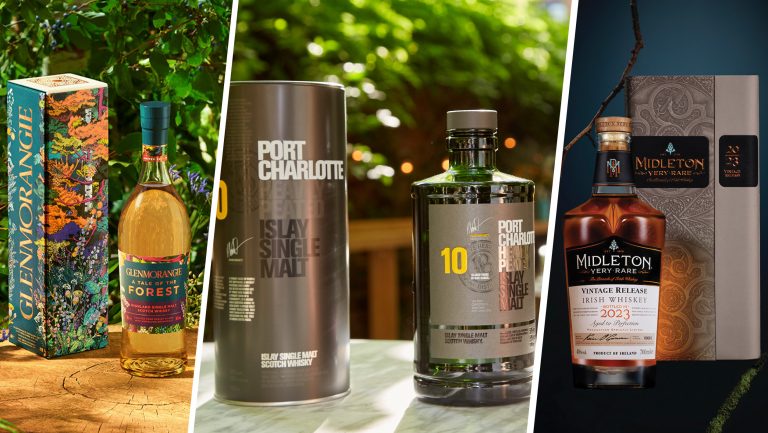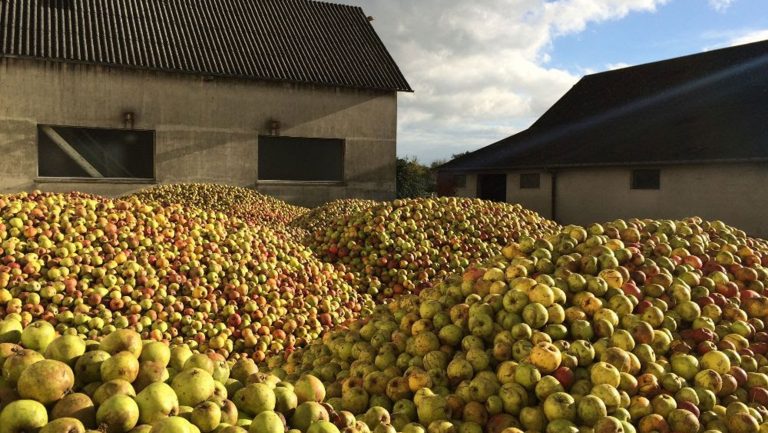When I called Stephen Lyman for an interview about shochu, the distilled Japanese spirit, I caught him in Kyushu in a predawn hour, before he started a 16-hour shift at Yamato Zakura Distillery in Ichikikushikino, Kagoshima, where he was apprenticing. “It’s a father-and-son operation,” he said. “It might be the smallest distillery in Kagoshima. They’re very thankful for any help they can get.”
Lyman’s professional life has been in the field of medical research—he has a PhD in epidemiology and is the acting director of the Hospital for Special Surgery’s Healthcare Research Institute in New York City and an associate professor at Weill Cornell Medical College. But during the last five years he has been on a personal crusade to teach America about shochu. It’s less a hobby than a vocation, one that has had him traveling to Kyushu for the past five years.
In preaching the gospel of shochu, Lyman is essentially starting from scratch. Often eclipsed by sake or confused with Korean soju, shochu is wildly popular in Japan—its sales overtook those of sake around 2003—but is only just becoming known in the States, even among liquor obsessives, mixologists, and spirits writers.

Don’t miss the latest drinks industry news and insights. Sign up for our award-winning newsletters and get insider intel, resources, and trends delivered to your inbox every week.
Fueling a Passion
Lyman’s interest in the spirit began by chance a decade ago, as he drank a discounted bottle with friends at New York’s Izakaya Ten restaurant. “It seemed like a good value,” Lyman says, and he kept returning for more. His personal shochu tasting notes evolved into a blog, Kampai.us, that now hosts the largest collection of English-language shochu reviews on the web.
In 2012 he was profiled by NHK, Japan’s largest broadcasting organization, as a New York shochu expert, “and it shocked me,” he says. “I realized that if I’m going to own that title, I needed to take that leap.”
Lyman persuaded the Sake School of America — which listed an English shochu certification course, although it had never been taught, due to lack of interest—to hold a session, and he became the first “certified shochu sommelier” in the United States. He now holds monthly shochu happy hours, branded as Shochu’sday, at restaurants around New York and beyond, consults for the Japan Sake and Shochu Makers Association (JSS), and assists restaurants in shochu menus and food pairings. He is currently writing his first book, a comprehensive guide to shochu and the related spirit awamori.
Framing the Appeal
Shochu is a spirit that defies easy categorization; in a way, it is a category unto itself.
The spirit is fermented by means of koji, the rice-grown microorganism also used in the production of sake, miso, and soy sauce. Honkaku shochu, or “genuine” shochu, undergoes a single distillation by pot still, which preserves much of the base ingredient’s flavor. Beyond those specifications, anything goes.
Shochu is often made from rice, barley, or sweet potatoes—but it can also be made from carrots, sesame, or chestnuts. Most shochu hovers at 20% or 25% ABV, but the spirit can reach far higher. It may be bottled unaged, rested in clay pots, or aged in charred barrels. The differences between products can be stark, though a novice taster could probably distinguish between barley and rice shochu.
Practically speaking, it’s hard to pin the spirit down. An 80-proof shochu distilled from barley and aged in barrels, unsurprisingly, resembles a whiskey. A 40-proof shochu distilled from rice can have the light, floral quality of a sake. When sold in Japan as a highball known as chuhai, shochu takes the place of a neutral spirit like vodka.
This diversity serves as a magnet for spirits obsessives, Lyman not least among them. Jamie Graves, director of the Japan beverage portfolio at Skurnik Wines, has found a dedicated community of shochu devotees—most with no professional connection to the beverage world. “It’s not a massive movement, but people do get very passionate,” Graves says. “There’s a galaxy of flavors in shochu, and certain people get very into that idea.”
Shochu is versatile, mixable, and genuinely food friendly, which is rare to find in a spirit. Lower-proof shochus can be served neat, but they’re also served with ice or diluted with cold or hot water to a proof comparable to that of beer or wine. In Japan, shochus are appreciated most often at izakayas, where eating and drinking are closely intertwined.
“It has heritage,” says Jesse Falowitz, whose brand, Mizu Shochu, first launched in the States in 2013. “It has authenticity. It has a beautiful story, craftsmanship, and a connection to the land.” All these factors appealed to Falowitz when he founded Mizu Shochu. With a background in brand strategy, he spent seven years based in various Asian cities, working on brands including Grey Goose, Chivas Regal and Heineken. But Japan had always held a particular appeal, and he moved to the country in 2010. “I wanted to work in a category with romance, product stories that were undiscovered,” he said. In the course of visiting shochu bars, distilleries, and more, he came to see shochu as a logical choice. “Each bottle is the essence of a local harvest,” he says. “And I see bartenders responding to that.”
Recognizing the Challenges
Even so, says Graves,, “it’s an extremely difficult category.” The 20% to 25% ABV shochus “are neither here nor there.” While sake can be compared with wine, and hard spirits can be compared with one another, shochu sits in the middle. “With this odd ABV,” Graves says, “shochu might as well have dropped in from Mars.”
Lyman recently conducted a survey of American adults who drink alcohol and found that only 6 percent had heard of shochu—and just 2 percent had tried it. (The web-based study, with 127 participants, was small but methodologically sound, according to the PhD researcher.) One hurdle to familiarity is that the name shochu is so similar to Korean soju. Although artisanal sojus do exist, “most of what’s imported is mass-produced ethanol—a cheap way to get drunk,” says Lyman. “If I mention shochu and people think they’ve tried it, invariably they’re thinking of soju. And they don’t like it.”
Regulatory laws further complicate the scene. In some states, soju—because of its lower ABV—is the only distilled spirit permitted for sale at establishments with beer and wine licenses. But shochu doesn’t have the same lobbying reach, and it hasn’t been treated with the same leniency. In California, shochu can be sold under a beer and wine license if the alcohol content is less than 25 percent and if the word “soju” appears on the bottle. Thus in California, shochus often have “soju,” inaccurately, displayed on the label. “The confusion is just augmented by these laws,” says Lyman. “You’re harming consumers, reducing consumer choice, and creating market confusion.”
Betting on Cocktails
Until the past few years, the demand for shochu was entirely driven by Japanese consumers in New York City, according to Graves. “But recently, with the craft spirits movement, there’s always a sense of people looking for new ingredients.”
Jesse Falowitz of Mizu Shochu agrees that the bar community will provide shochu’s path to prominence, since it’s an almost ideal ingredient for a lower-proof cocktail to accompany a meal. His two current brands, a barley shochu and a rice shochu made with lemongrass, are produced at 35% ABV, a proof more familiar to bartenders.
Falowitz reasons that bartenders drive so much of spirits growth in the States. “If the category is going to attract a sizable audience, I’m more confident in the higher-proof shochus,” he says. “My hypothesis is that these are craft spirits and can occupy an interesting niche in the cocktail world. It’s a new story that hasn’t been told.”
Falowitz finds that bartenders are intrigued by shochu because it’s not just a new product—a new amaro or liqueur, say—but an entire category of base spirit. “It’s a way to get away from the monotony of familiar ingredients,” he says, “and add to your repertoire. It’s a new arrow in your quiver, a new color on your palette. It’s refreshing.”
According to the JSS, shochu imports in the U.S. have grown from 428,000 liters in 2011 to 477,000 liters in 2016, an 11 percent gain over five years—fairly modest growth. But high-proof shochu—which accounts for just 2 percent of the shochu market—has grown significantly, with exponential US sales increases, from 279 liters to 10,040 liters, during the period from 2011 to 2017.
Mizu Shochu has grown as well. As 2017 came to an end, the brand projected a 70 percent increase in North American sales over 2016, expanding from eight states to fourteen, and planned a West Coast launch for 2018.
Accounting for the brand’s success, Falowitz points to the adoption of Mizu Shochu at high-profile bars like Brooklyn’s Clover Club and The Aviary in Chicago, and even restaurants like Manhattan’s Daniel and Husk in Nashville, as well as Japanese-inspired cocktail bars like Angel’s Share and Bar Goto in New York.
Falowitz says other distillers, and the JSS, are now following the American shochu market with keen interest. “I suspect that there are more high-proof shochus on the way, given the positive feedback on our higher-proof from a number of other shochu makers in Japan.” Mizu will release a green-tea shochu in early summer and hopes to produce more seasonally inspired expressions in the future.
Of course, mixologists can play around with shochu all they want, but it will be to little effect if those cocktails don’t sell. “Every time I put a drink with shochu on the list, it starts as the least-sold drink,” concedes Nico de Soto of New York’s Mace. “Because people simply don’t know what it is. But if you talk to them and explain, they’ll try it right away.”
This is the current state of shochu’s growth—one cocktail at a time, one store tasting at a time, one bar at a time. But Graves, Falowitz, and Lyman are all optimistic. “I’m encouraged that there’s something catching,” says Falowitz. “There is traction, for sure.” He characterizes shochu as being several years behind cachaças and mezcals, but gaining ground.
In Japan, where the spirit’s popularity has reigned for more than a decade, there are no shortage of beautifully made shochus, nor distillers with a keen interest in export. And many will keep one eye on the American market, waiting to see whether shochu catches on.

Dispatch
Sign up for our award-winning newsletter
Don’t miss the latest drinks industry news and insights—delivered to your inbox every week.
Carey Jones is the author of Brooklyn Bartender: A Modern Guide to Cocktails and Spirits and a frequent contributor to Food & Wine, Travel & Leisure, Saveur, and many other publications. She is a former managing editor of the James Beard Award–winning website Serious Eats.







